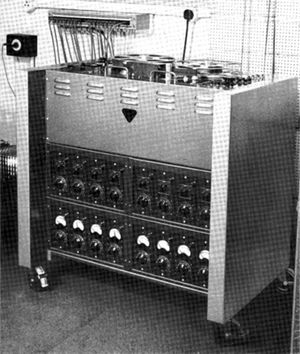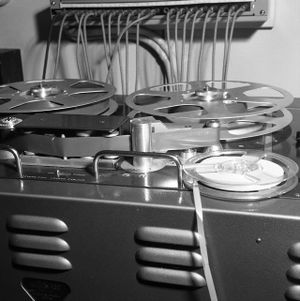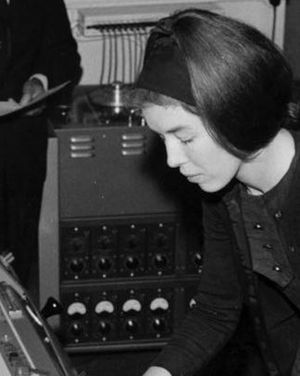Difference between revisions of "Leevers-Rich"
From WikiDelia
Jump to navigationJump to searchMartinwguy (talk | contribs) |
m |
||
| Line 15: | Line 15: | ||
<BLOCKQUOTE> | <BLOCKQUOTE> | ||
| − | [It] could only record one track at a time, which made it almost useless.<ref>Ray White in the [ | + | [It] could only record one track at a time, which made it almost useless.<ref>Ray White in the [https://whitefiles.org/rwg/slides/RW00750.html Radiophonic Workshop Gallery].</ref> |
</BLOCKQUOTE> | </BLOCKQUOTE> | ||
Revision as of 14:00, 25 December 2024
By 1962, a Levers-Rich multi-track variable speed tape deck had been pressed into service, but although too noisy for multi-tracking, its 2-40 i.p.s. speed variance was usefil. By the use of keys it was possible to alter its speed in semi-tone intervals enabling it to be played much like a keyboard.[1]
We had one Leevers-Rich 8-track machine which was a bit of a white elephant, It was an expensive variable speed 8-track machine on one-inch tape but it wasn’t very good sound quality.[2]
[It] could only record one track at a time, which made it almost useless.[3]
References
- ↑ A History of Electronic Music by Derek Pierce in Electronics & Music Maker magazine, May 1982, p.27.
- ↑ Delia in the Radiophonic Ladies interview.
- ↑ Ray White in the Radiophonic Workshop Gallery.


